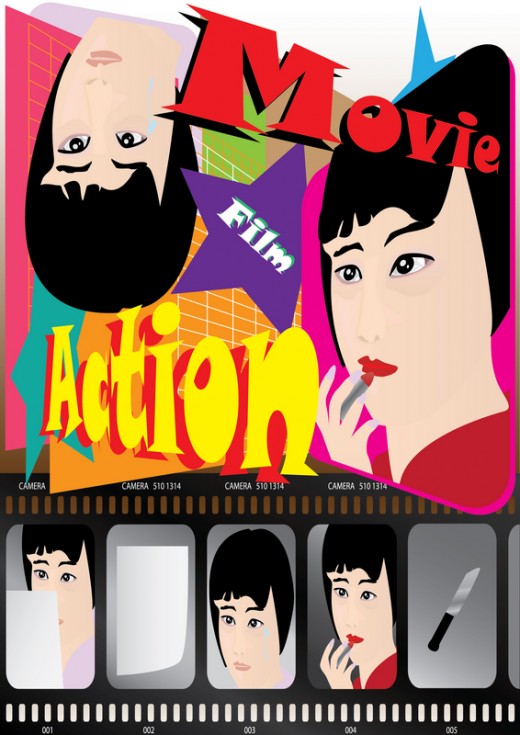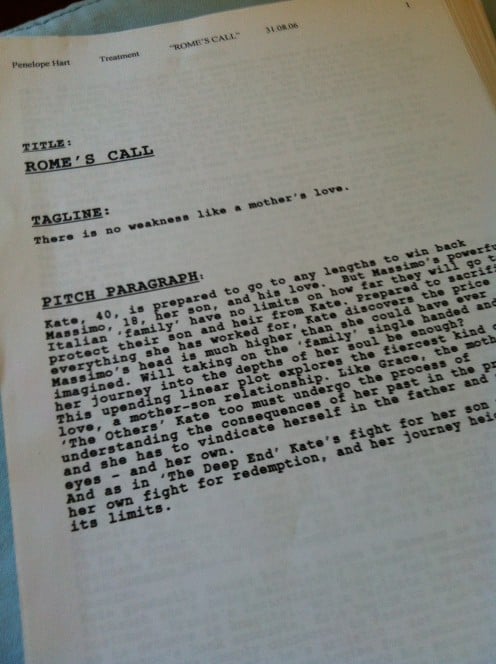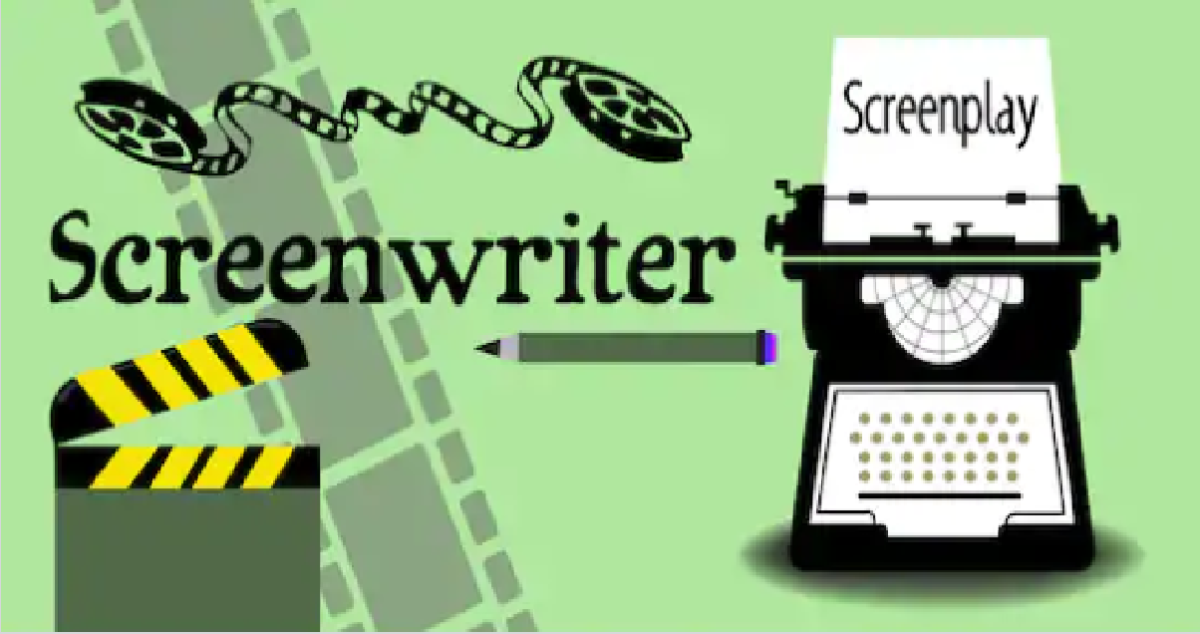How to Write a Movie Script that Rocks!
How to Write a Script

How To Write a Screenplay
You're thinking about how to write a movie script. You visualize something exciting. You see a scene. You make a few notes about it.
You read a few lines somewhere about say emerald studded beetles as pets. You make a few notes about that too. You know you'll forget if you don't. You keep notebooks or files on your lap top for nuggets such as these.
One part of your mind flames with fantastic ideas, while the other side of your mind tries to organize them so that they will become a story 'that works' as a movie. You'll be deciding what genre your story is - a mystery or a drama, a horror story. What are those genre expectations? How to write a low budget film from the idea? What is your theme?
This is exactly the process that writing a screenplay involves. We can free float-ideas on the one side of our brain.
The other side of the brain puts them in order, looks for a structure which is more scientific, makes decisions about making the ideas work in a story form for a movie script that an audience will enjoy. Make those notes too. Title them in categories as you go along.
What to Consider when Structuring the Script
These are the main aspects you will need to work out before you write your script:
Is your script character driven? Is it a Horror Story, or would it better told as a Ghost Story (Genre)? What is the tone of your story? What structure does the story ask for? Is it dialogue driven?
- Characters
- Structure
- Plots
- Tone
- Genre
- Dialogue
How to Structure a Movie Script
The 'Three Act Structure' is the classic structure film makers use because audiences are used to the form - ever since since Hollywood began making pictures. It is familiar. The predictable structure poses and then answers the questions we need to have answered within the time frames we are used to.
The first Act takes a quarter of the time.
The Second Act takes a half of the film and the
Third Act takes the last quarter.
The questions asked in the Three Act Structure are these:
A. Who is the someone?
B. What do they want?
C. How badly do they want it?
D. What kind of difficulty are they having getting it.
If you can answer these questions you are a way towards writing something.
Have characters just wandered onto your page that you had not planned?
Have you ever written a story and your protagonist just came into your head and stayed?
How to Develop Characters
You might already have notes on your main character or protagonist. You could still be developing them. There are no rules, or limits. The scriptwriter is king or queen of their worlds. They discover them as they like!
I had some fun answering the above questions - as an example of how to invite characters into my consciousness.
A. The someone is?
A red headed 23 year old lady Eskimo, a baker.
B. She wants?
To eat a mutton vindaloo in India with a prince and princess
C. She wants it so badly?
She will leave her 1 year old triplets with her bodybuilding Texan husband to go to India to eat one. (He's a crane operator that works shifts out in the North Pole)
D. She's having tons of difficulty because.............she didn't win the competition to go, but she'd determined to go anyway and has to fight her husband.
If you want to come up with some ideas for a movie why don't you try the same exercise?
Screenplay Formatting Facts
A Treatment is about 35 pages.
A movie script is approx 90 -120 pages
Each page represents 1 minute shooting time.
Type the script with scriptwriting software such as Final Draft.
A Screenplay

Write the Story Outline First
Before writing your script write the story outline. Write a detailed Treatment too. They are essential documents to work from and help sell the script.
It's a good idea to write about your protagonists and antagonists in short story form - or talk to them with software linked here; to become familiar with who they really are, what their weak spots and endearing qualities are, how they feel (even secretly), what their antagonist is like, what their worlds are like too, how they all speak. Become familiar with the inside of their homes or planets or beach huts or insane asylums as though they were your home. Inhabit their worlds and know them, intimately. And their next door neighbors.
Other research to spend time working on will include reading books about heroes and heroines that are like your heroes. Study the history of your period. Or the language of the place or time, even if your script takes place ten years before the date your movie comes out.
"It's in the detail"
- The Internet Movie Script Database (IMSDb)
Movie scripts, Film scripts at IMSDb
The First Act - The Story
The baker and the crane driver are having a hot tea break out in the snow with their 1 year old triplets when they are hit by a snowball thrown by the wicked boy next door. The huge, rough- faced crane man orders him over to tell him off but a competition leaflet falls from the boys trousers which catches the crane driver's attention. While the wicked boy starts to beat it back to his house, the crane driver reads it to his wife who is entranced by it. It's about winning four nights in India and a dinner of mutton vindaloo. They all laugh and roll on the snowy ground. The wife, mother of the (now crying) triplets is saying she wants to eat mutton vindaloo. She's going to win the competition. The huge rough crane man can't hear her for laughing (and his triplets crying). He hasn't noticed how serious his wife is about this vindaloo business. Or that the wicked boy stopped running away and is standing there laughing too. Or is he?
The Second Act Plot Twists and Turns
We need to know why the red headed baker Eskimo woman wants to go to India to eat vindaloo. We need to know her state of mind, her past, what her marriage is like. What is her husband like. What drives her to want this trip is what must be developed. Is this a romantic comedy? Is it a drama? Can it be science fiction (because the wicked boy is from some weird planet luring a human away)? Is it horror, because one of the triplets disappears whilst they are laughing, (yet another baby to disappear in a year?). Is it a murder mystery, because the woman goes to India and never comes back and the crane driver has to go to look for her with the triplets under arm?
Third Act Resolution
So she didn't make it to India (she learned she had to be happy mothering her children) but her crane husband worked overtime (he learned he had to give her what she really wanted) and earned enough money to have a vindaloo flown in from Bombay for her birthday. She took TEFL lessons while she worked at the bakery, (tuned into BBC4, listened to the afternoon play when they got snowed in) and taught her babies English so that they could go to India when they grew up. (she became the best mother in the North Pole in fact).
Ways to Create Dramatic Structure in Scriptwriting
DRAMA COMES FROM:
- OBSTACLES CHARACTERS FACE
- AND THE DECISIONS THEY MAKE.
I've had some fun writing examples of what happens in the story I came up with as a result of answering those questions - to the mother of the triplets and her crane-driving husband in the First, Second and Third Acts - in the blue columns on the right!
Descriptions of The First, Second and Third Act are below.
(Please read the descriptions of the Acts and follow each Act by reading the story developments on the right.)
The First Act
Establishes the status quo of the principal character and SETS UP the inciting incident (which is the event or the thing that creates the problem that the script needs to resolve, that the movie is ALL about).
IT TELLS US WHAT IS GOING TO HAPPEN
The Second Act
It's where all the plots and twists and turns are elaborated on, new characters introduced. It's where the first serious obstacle is faced and overcome and the main character almost gets what they want. A main sub plot is usually introduced which contrasts with the main plot, (sometimes people fall in love) - creating the collision and the dilemma. It establishes the main tension (things get screw things up) and drives the story forward. Will the principal character ever get what they want? This is where the art of scriptwriting comes in.
SHOWING US IT HAPPENING.
The Third Act
Is about what the main character has learned, what's going to happen next. How will it turn out. Things don't look so good. The resolution was false. But it isn't. (A twist). Then, there's the resolution and an outcome.
TELLS US WHAT HAPPENED.
What Is Scriptwriting?
There are university courses and writers workshops which teach how to write a movie script (or Scriptwriting). But there are very many updated resources available which do explain the craft of Scriptwriting possibly just as well. The links to the text books mentioned here are contemporary, analytical and very helpful.
Movie scripts need to be fresh.
The other links to free downloadable screenplays to read and to study are invaluable.
A really good way to study how to write a script is to read very many scripts of very many genres and cults for example Apocalypse Now. Thelma and Louise. American Beauty. Shine. Trainspotting. Kill Bill. Magnolia. Legally Blonde. Priscilla Queen of The Dessert. Become familiar with audience expectations. The Tone. The Timing. Read the scripts and play the Videos - together.
- Play the first act of the movie.
- Stop it.
- Read that same act in the script.
- Start the movie where you left off.
- Continue through the movie like this. Perhaps stopping after only a fewer sequences.
- Study a sequence
- Analyze how succinct the action descriptions are in the script.
- Analyze how each word, each segment of each scene, each action is pushing the story forward.
The art of great scriptwriting is in 'show', don't 'tell'. Words don't describe what we are seeing, words characterize the protagonist; they must surprise the audience. The script describes the action.
If you want to write a dialogue driven script watch the movies The Social Network (David Fincher), The Big Lebowski (Joel Coen Ethan Coen) are great examples -
If yours is a character driven movie, watch Into the Wild, (Chris McCandless) Scarface, (Tony Montana) Kill Bill (Quentin Tarantino).
If you want to just have some fun with plots 'Indianna Jones' is your film. Indianna is a great guy but he reacts to events rather than create them and we know so little about his personality or philosophies.
Ways to Write For An Audience
There are 3 key co-dependent participants in telling a film story.
- The storyteller. (You)
- The characters in the film (Your creations or from a literary adaption)
- The audience (People like you!)
How to write a movie script is always and only ever about;
SOMEONE WHO WANTS SOMETHING BADLY AND IS HAVING DIFFICULTY GETTING IT.
- How to Get a Movie Script Produced
A few ways how to get a movie script produced through your local film industry and in Hollywood. What an agent does. What a Producer does. - How To Sell A Movie Script Write The Treatment
Write the film Treatment if you want to sell a film script. Make it industry standard.
© 2012 Penelope Hart








